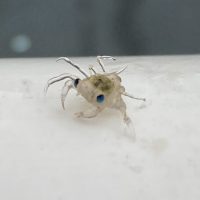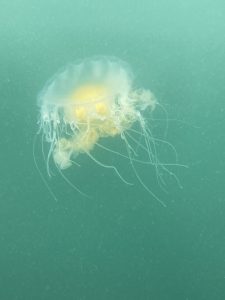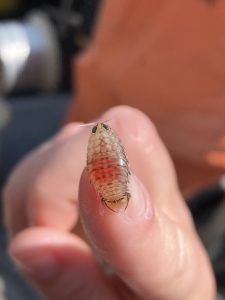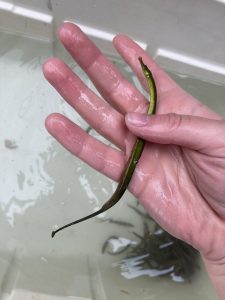From the lab to the field: Jellyfish research as a NOAA Hollings Scholar
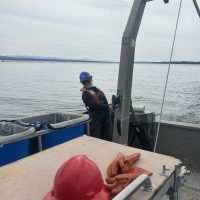
Now in the fourth week of her NOAA Hollings Scholar internship, Megan Cosand has been immersed in the world of jellyfish research, looking at Skagit Bay’s lion’s mane and fried egg (also known as egg yolk) jellies. Specifically, she has been working with long-term datasets to understand how different environmental factors contribute to blooms of these jellyfish species.
“So far I’ve been working on fitting models to some data for different jellyfish, and the results have changed as the models and data have been updated, so we don’t have a lot of conclusive results yet,” Megan said. “It does look like there is an inverse relationship between lion’s mane jellyfish and fried egg jellyfish that goes beyond their relationship to temperature, but I still haven’t figured out what could be causing it.” Megan hypothesizes that it could be the jellyfish eating each other, or maybe they’re competing for the same food source: plankton.
One of the tools Megan is using to develop models and visualize them in graphs is R, a skill picked up during her Marine Biology studies last year. “I have some experience using R from QSCI 381 and FISH 454, but I’m learning new skills and shaking the rust off some things I have forgotten,” Megan shared. “Right now, I am learning about GAM (generalized additive models).”
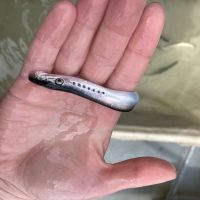
Megan is also seeing a clear effect of the infamous ‘blob’, a mysterious pool of warm water in the Pacific Ocean that originated in 2013 in Alaska and spread all the way down the West Coast. “For fried egg jellyfish, the data shows they were much more likely to be found in tows for the next two years after the blob started! Something I’m still working on is adding data from the last couple of years when we have also had warm water events, to see if the jellyfish responded the same way,” Megan said.
- A fried egg jellyfish in Skagit Bay, also known as an egg yolk jellyfish.
- Isopod fish parasite (Rocinela sp.). Its red stomach is full of fish blood.
- Megan holds a pipefish, which are part of the same family as seahorses.
It’s not only lab-based data modelling for Megan—she’s also been elbow-deep in field-based research too. “One of the most exciting parts of my internship so far has been the fieldwork. My project uses 25-year-old data from surface tow netting in Skagit Bay, and NOAA spends three days a month from April to September doing these tows,” Megan said. To get the data they need, NOAA tows a net through the top ten feet of the water column in different sites around Skagit Bay. “I got to go up and help on the boat for two days in June, and we caught a lot of neat fish (which is mostly the point of the monitoring), in addition to jellyfish—which my project is focusing on,” she added.
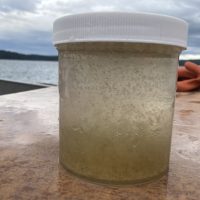
Some of the other tasks Megan completed on the boat trip were water chemistry measurements, managing the net, and identifying and measuring fish, including salmon, lamprey, pipefish, crab larvae, and isopod fish parasites. “We also took plankton samples that I concentrated and washed into sample jars,” Megan said. “These plankton samples are eventually sent to UW to be analyzed—where I actually have a friend who works in the lab that processes them—so it’s cool to see how the marine science community connects across organizations.”
Working with NOAA for 10 weeks this summer, stay tuned to hear what Megan gets up to in the second half of her internship!
